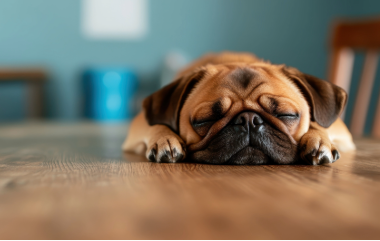Animals sleep in ways that can seem strange to us. Some nap for only seconds, some rest with half their brain and others barely sleep at all. From cats to penguins to termites, here are 10 surprising sleep facts in the animal kingdom.
Cats are pros at snoozing
Cats sleep up to two-thirds of their lives. They dream, they twitch and sometimes they even snore. (Source)
Penguins power nap
Chinstrap penguins fall asleep thousands of times a day, but only for about four seconds at a time. All those tiny microsleeps add up to more than 11 hours of sleep per day while they guard their nests. (Source)
Elephant seals nap while diving
Northern elephant seals get just two hours of sleep a day at sea. They take short naps of less than 20 minutes while diving deep underwater, entering full REM sleep as they drift down below their predators. (Source)
Walruses rest half a brain at a time
Walruses can snooze nearly 19 hours a day on land. In the ocean, they experience “unihemispheric sleep,” where one half of their brain sleeps while the other stays active, letting them swim and sleep at once. (Source)
Spiders may dream
Jumping spiders suspend from silk threads and experience eye movements and twitch their limbs in their sleep, showing signs of REM. That means they may dream, much like humans. (Source)
Bees need dark nights
Honey bees need sleep to perform the “waggle dance,” a communication method to share the location of food sources with hive mates. Disrupted sleep from too much artificial light at night throws off their body clocks and makes them dance and communicate poorly, threatening their role as pollinators. (Source)
Flat-faced dogs sleep a lot
Breeds like pugs and French and English bulldogs sleep more because their breed-specific sleep apnea increases daytime sleepiness. They tend to live shorter lives than other dogs. (Source)
Pandas get “jet lag” in zoos
Pandas in zoos outside their natural latitude range can feel out of sync. Changes in daylight and temperature throw off their rhythms, leaving them sluggish. (Source)
Bears keep ticking in hibernation
Even while hibernating, grizzly bears’ internal clocks still run. Their energy cycles rise and fall in a daily rhythm through months of deep sleep. (Source)
Termites don’t sleep like we do
Worker termites have body clocks that guide their activity, but they don’t have a normal sleep cycle. Instead of resting in long stretches like humans, they stay active around the clock, chewing through wood nonstop. (Source)
Related:
- Meet the creator of Cozy Critters — The podcast helping kids fall asleep fast
- Do all animals sleep?
- The Animals Sleep: Book review





